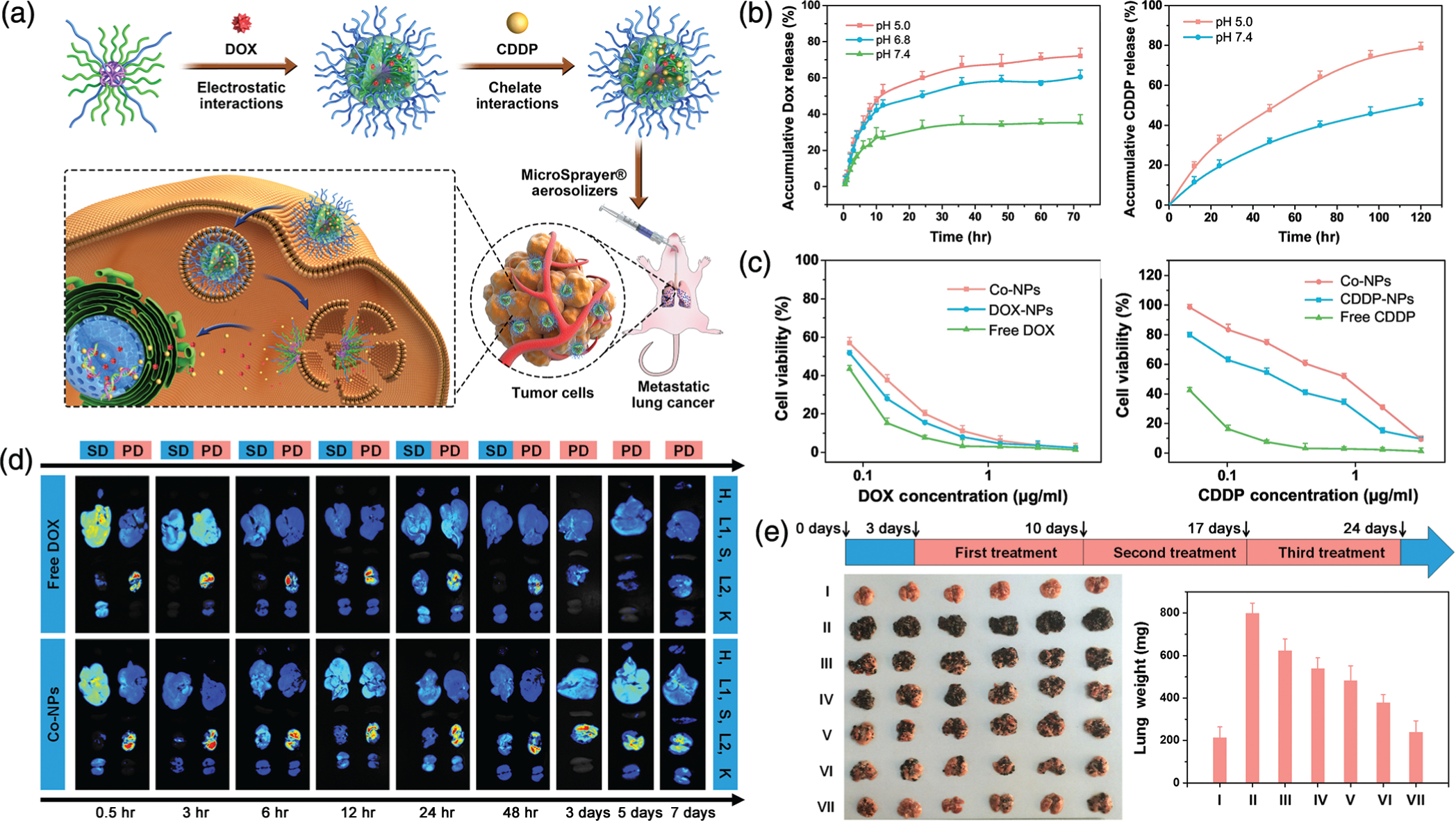FIGURE 2.

Copolymer nanoparticle (NP) system for the pulmonary codelivery of doxorubicin (DOX) and cisplatin (CDDP). (a) Schematic representation of the copolymer NP showing the incorporation of DOX through electrostatic interactions and CDDP through chelate interactions to create Co-NPs. The Co-NPs are aerosolized to be administered to mice bearing lung tumors, where within the Co-NPs penetrate and enter tumor cells and begin to rapidly release their contents to induce cytotoxicity. (b) The encapsulated drug release of DOX (left) and CDDP (right) from the Co-NPs in PBS, showing faster release at lower pH. (c) Cytotoxicity assay results against B16F10 melanoma cells in relation to DOX concentration (left) and CDDP concentration (right), indicating the enhanced cancer cell toxicity of the codelivery system compared to either drug alone. (d) The in vivo biodistribution of DOX in main organs of mice after either systemic delivery (SD) or pulmonary delivery (PD) of free DOX or Co-NPs (H, heart; L1, liver; S, spleen; L2, lung; K, kidney) at different time points over 72 hr, showing increased retention from Co-NPs in PD. (e) in vivo antitumor efficacy in a B16F10 metastatic lung cancer mice model with the treatment timeline (top). Surgically removed lungs (left) and their average weight (right) for each treatment group (I, healthy mice control; II, PBS; III, free CDDP; IV, free DOX; V, CDDP-NPs; VI, DOX-NPs; VII, Co-NPs) after pulmonary delivery. (Reprinted with permission from Xu et al. (2019). Copyright 2019 Elsevier)
